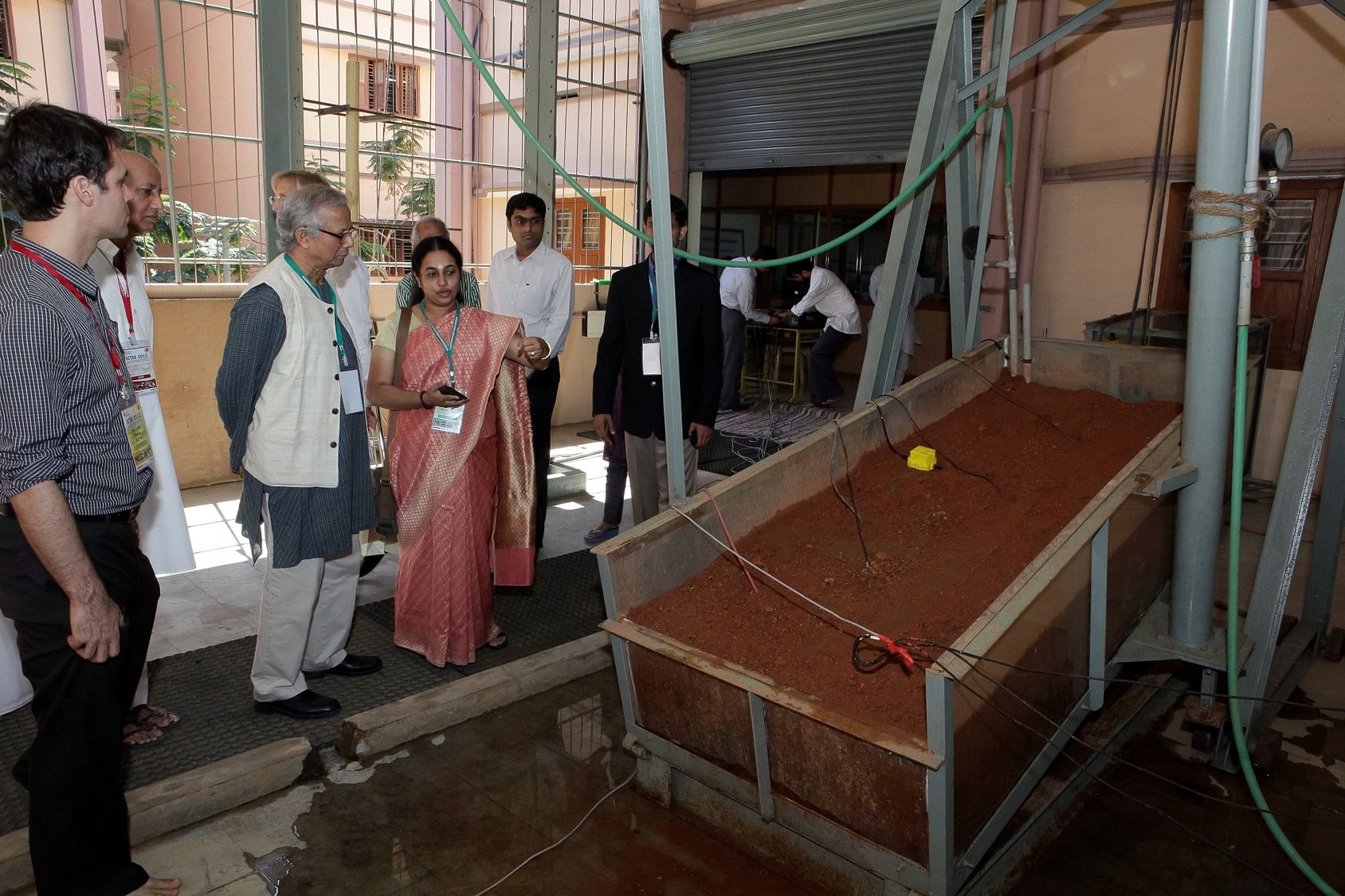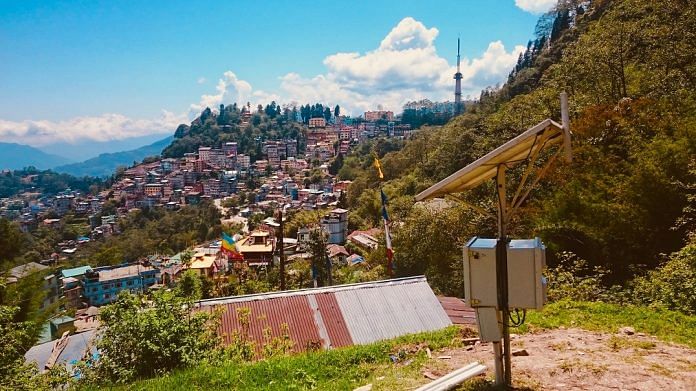Scientists from Amrita university set up system in Gangtok, the second such model after successful installation of one in Kerala’s Munnar.
Gangtok: Sikkim, one of India’s most landslide prone states, got its own early warning system last week when a group of scientists installed more than 200 sensors at 12 locations in and around Gangtok district.
The system provides a warning 24 hours in advance, giving citizens time to evacuate and get out of danger.
This is the second installation of a landslide warning system by the Coimbatore-headquartered Amrita Vishwa Vidyapeetham, after it successfully set up one in Munnar, Kerala in 2009.
Seen as India’s first indigenously developed landslide warning model, the system is IoT (internet of things) enabled.
How it works
The ‘landslide early warning model’ consists of three levels. The first level measures the rainfall and issues warnings when thresholds are crossed. The second level generates a factor of safety (FOS) for specific locations based on real-time data from the field such as moisture and pore pressure (pressure exerted by groundwater between layers of soil), classifying risk levels. The third level will use data from movement and vibration of sensors to issue a landslide detection alert.
The system currently in place in Sikkim has been customised for the tectonically active, earthquake-prone Himalayan belt. It comprises more than 200 sensors that can measure geophysical and hydrological parameters such as rainfall, pore pressure and seismic activity.
It will monitor a densely populated area spanning 150 acres around the Chandmari village in Sikkim’s Gangtok district.
The landslide prediction model processes the data and provides two outputs. Using the rainfall measurements, it first projects a long-term risk over a period of days. But as more data comes in, a second output performs real-time adaptation of the model, giving short-term projections.
What sets the system apart, other than monitoring beyond rainfall, is the IoT configuration and artificial intelligence that provides fast and accurate data processing.
All the incoming data will be processed at the nearby Field Management Centre, currently being set up. The single-room office is built on land given by the Government of Sikkim, sitting squarely on a picturesque precipice in Chandmari. This area has seen landslides in the past, the first one being reported in 1997.
Also read: Kerala floods: The science behind what went wrong, and what we have to learn
The warnings issued also fall under four categories which alert different groups of people, starting from researchers to the government to the media, to finally, the public for evacuation.
The project in Sikkim is co-funded by the ministry of earth sciences and deployed in collaboration with the Sikkim State Disaster Management Authority.
Testing, simulation and equipment
Amrita Vishwa Vidyapeetham has a ‘test bed’ laboratory — set up in 2008, this is the first of its kind — on its campus in Kerala, where different types of soil are placed on containers whose height and angle of inclination can be adjusted by hydraulic pumps, simulating any of the mountainous terrain in India.
These test beds are embedded with sensors, providing for initial simulation and understanding of soil movement patterns before sensors can be placed in actual locations.

Sensor hub
The sensors themselves are placed a few metres apart at varying altitudes throughout a location. In Chandmari, beyond an uneven 300-stair climb and a slippery hike through a forest, one can find a pair of sensor hubs.
Each consists of a concealed and locked containment on the ground that houses a network of sensors, data transmitters, and battery backup, all powered by a solar panel above the ground.
More seismic sensors are placed nearby, within a distance of a few metres, helping zoom in on the exact spot of soil shifting. The equipment that detects motion such as geophones, tilt meters, strain gauges, piezometers, and pore pressure transducers are typically drilled deep into the soil, up to 35 m, and placed within so as to detect soil movement from deep within.
Importance of landslide monitoring
Landslides are the third biggest natural disasters in the world, with India experiencing the biggest bulk of them — 15 per cent of the country is prone to landslides and India has the highest number of landslide deaths in the world.
Sikkim falls under one of the several landslide prone areas in India, including Western Ghats, Eastern Ghats, Konkan Hills, northeast Himalayas and northwest Himalayas.
The Sikkim-Darjeeling belt falls under the northeast Himalayan risk region, with the highest occurrences of landslides each year.
Just last week, Sikkim was cut off from its only access road via Siliguri, West Bengal, after heavy rain gave rise to landslides in several places. On average, 10 people are killed every year due to landslide-related disasters in this region.
Also read: Modi inaugurates Sikkim’s first airport, furthers BJP’s ‘look northeast’ policy
“In-situ monitoring methods (deployed on the ground) like what Amrita is setting up in Sikkim can issue early warnings much more accurately than the rainfall threshold model,” Maneesha Sudheer, director, Centre for Wireless Networks & Applications, Amrita Vishwa Vidyapeetham, told ThePrint.
Venkat Rangan, vice-chancellor of the university, claimed this system has been actively monitoring Kerala’s Munnar area for landslides and has issued several successful warnings to date.
For their efforts, Amrita university was awarded ‘World Centre of Excellence on Landslide Disaster Reduction’ by the International Program on Landslides (IPL) last year.
(The reporter was in Gangtok recently at the invitation of Amrita Vishwa Vidyapeetham)



